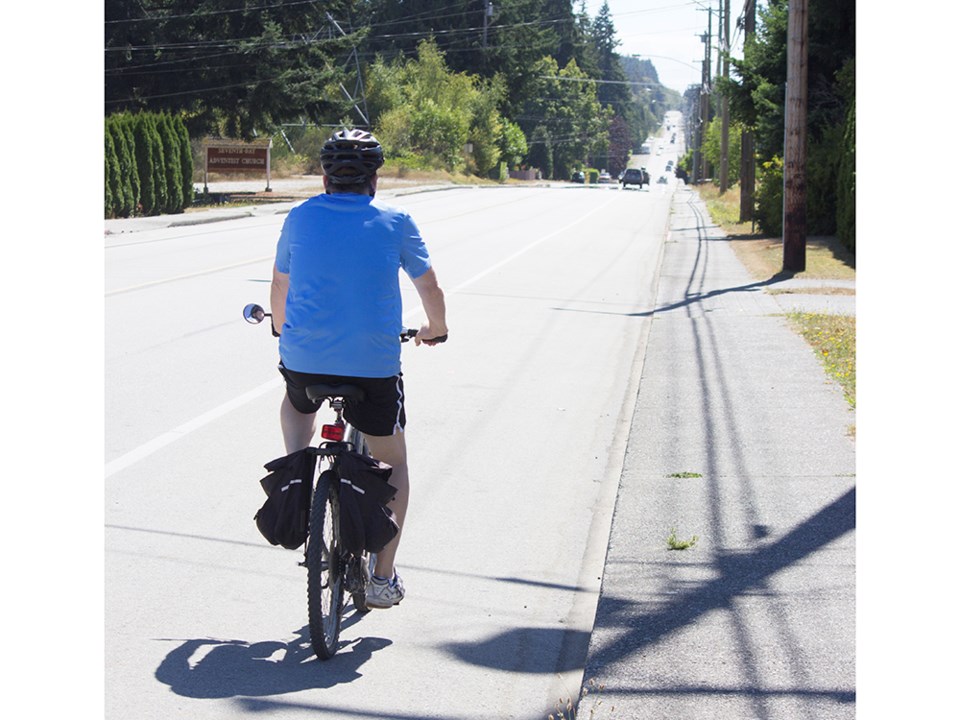City of Powell River council has adopted a bicycle network strategy and directed staff to prepare necessary amendments to the city’s sustainable official community plan.
At an October 21 meeting, councillor CaroleAnn Leishman said thanks went to city staff who gave input into this plan, and to the consultants for their great work. Leishman said she also wanted to acknowledge the city’s youth council.
“We’ve struggled trying to get together through COVID-19,” said Leishman. “This was probably the last engagement we were able to have with the youth council members. They were brought in for a session with the design company to discuss the unsafe areas and how [the youth council] felt biking around our community would be made better.
“The climate change committee members were engaged on this and a lot of different members of the community, such as moms who bike around with their kids with bike cargo trailers, different members of the bike association, and school kids. It was really a good, comprehensive engagement that went into this plan, which has some great stuff in it, such as mapping, a great logo and branding proposal.”
Leishman said it was exciting to see the strategy’s all ages and abilities approach to make streets much safer for vulnerable users.
“I’m really happy to endorse this plan,” said Leishman.
Councillor George Doubt said it was great to have this plan and to get it in as part of the sustainable official community plan.
“It’s a good thing and gives us a place to go,” said Doubt. “If all of it came to pass, the signage and everything would be great. It would make this a safer and more efficient place to do active transportation.
“The most important thing about this study and having it in hand is it will assist us in trying to find funding from various other sources, grants sources, et cetera. Once you’ve got a plan, as we know from experience, you can go out and apply for the funding and have some hope of getting to the goals we all aspire to, which, I think, is safer and more effective active transportation.”
Long way to go
Doubt said the city is not there yet and has a long way to go, but he is in favour of doing what is being asked in the strategy.
Councillor Rob Southcott said after spending three days in the Federation of Canadian Municipalities sustainable communities conference, he is realizing that in works like this, this community is ahead of many communities in Canada.
“This kind of work is now becoming more the norm among communities that do have a consciousness of climate mitigation and adaptation,” said Southcott. “I’m sure happy to see this in our possession now.”
Councillor Cindy Elliott said she is very happy to see the standards for all ages and abilities. She said she liked the photos in the strategy that shows exactly what the standard looks like.
“You get to see the curbs that protect the bicyclists from the traffic, or how things are completely separate,” said Elliott. “It’s a great planning tool that can help us plan better ways of doing things in the future.”
According to a staff report, having a council-adopted bicycle network strategy will support the city in pursuing active transportation funding from the federal and provincial governments. Following council adoption of the bicycle network strategy, staff will work to update the official community plans schedule (cycling network map) to satisfy the Union of British Columbia Municipalities (UBCM) active transportation planning grant requirement.
The city received $20,000 from UBCM for the strategy and the city was able to hire a consulting firm to develop its first all ages and abilities bicycle network plan.



